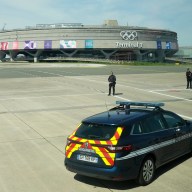The city is launching its highly-anticipated, first-ever bike sharing system this July — but you’d better start saving your money now to get the most bike for your buck.
Mayor Michael Bloomberg announced today that Citigroup will pony up $41 million to sponsor the bike share. According to plans detailed this afternoon, it costs $9.95 to rent a bike for a 24-hour pass, which includes 30 free minutes. After that, the next 30 minutes costs $4, and the next 30 costs $13. It’s $12 for every half hour after that. Read more about the pricing here.
If you want to keep the bike for a four-hour afternoon ride, say, a trip out to Coney Island and back, get ready to pay $85 for the rental. And if you keep the bike for 24 hours, that will cost you a whopping $145.
At those rates, it’s cheaper to just buy a second-hand bike off Craigslist, or even just to sign up for Zipcar.
But there is a way for New Yorkers to take advantage of the new program without spending the same you would on a monthly Metrocard.
After you pay the 24-hour $9.95 fee, you can keep your wallet in your pocket for the rest of the day if all your rides are under 30 minutes. So start off by the Brooklyn waterfront, for example, and make your way to the High Line. If you can make that trip within 30 minutes, you can grab another bike and pedal that up to Columbus Circle. Return the bike at a docking station there and cycle through Central Park for another 30 minutes before returning.
The bike share will require an interval between rides, although they have not decided whether that will be, for example, 2 minutes or 30, a Department of Transportation spokesperson told Metro.
Bike share officials said they designed the program after data showed 54 percent of New Yorkers’ daily trips are less than two miles. So Citigroup hopes that riders will climb on, cycle and return the bikes swiftly, and under half an hour, so other riders can use them.
“The idea behind bike share is simple — give people one more way to get around town,” Bloomberg said. “When the walk seems a little far, New Yorkers can … take a bike.”
Starting in July, 600 docking stations with 10,000 bikes will be set up on sidewalks, curbside road spaces and plazas in Manhattan and Brooklyn. Each station will hold up to 60 bikes.
Locations for the bikes will be revealed later this week, according to the Department of Transportation, but proposed bike docks are being mulled for near Times Square and the High Line.
And, Citi Bikes promised a program where qualifying low-income New Yorkers can buy a reduced-pay membership for $60.
Any profits will be split between the city and Alta Bicycle Share, which operates the system.
Cheaper in other cities
Here’s how New York’s system compares to Boston and London, both of which already have bike share programs, and Zipcar:
New York’s pricing is about double what the bike share in Boston costs, where a 24-hour pass is $5, which includes 30 minutes free, with the second 30 minutes $2 more. After that, 60 minutes to 90 minutes brings the hourly fees to $6.
In London, a 24-hour pass costs one pound. The first 30 minutes are free, followed by a pound for the second thirty minutes, and four pounds for an hour and a half.
If you’re running an errand that requires a car, the Zipcar “occasional driving plan” annual fee and application fee is $85, with hourly rates starting at $9 during the week.
How do they protect the bikes from theft?
Bikes are secured in docks that require a unique key or unlocking code. When someone rents a bike, a $101 hold is placed on the rider’s credit card. The penalty for a lost bike is $1,000. If the dock is full, riders can ask for a “time credit” through the touch screen, giving an extra 15 minutes for free and directing you to a nearby dock with empty slots.
















